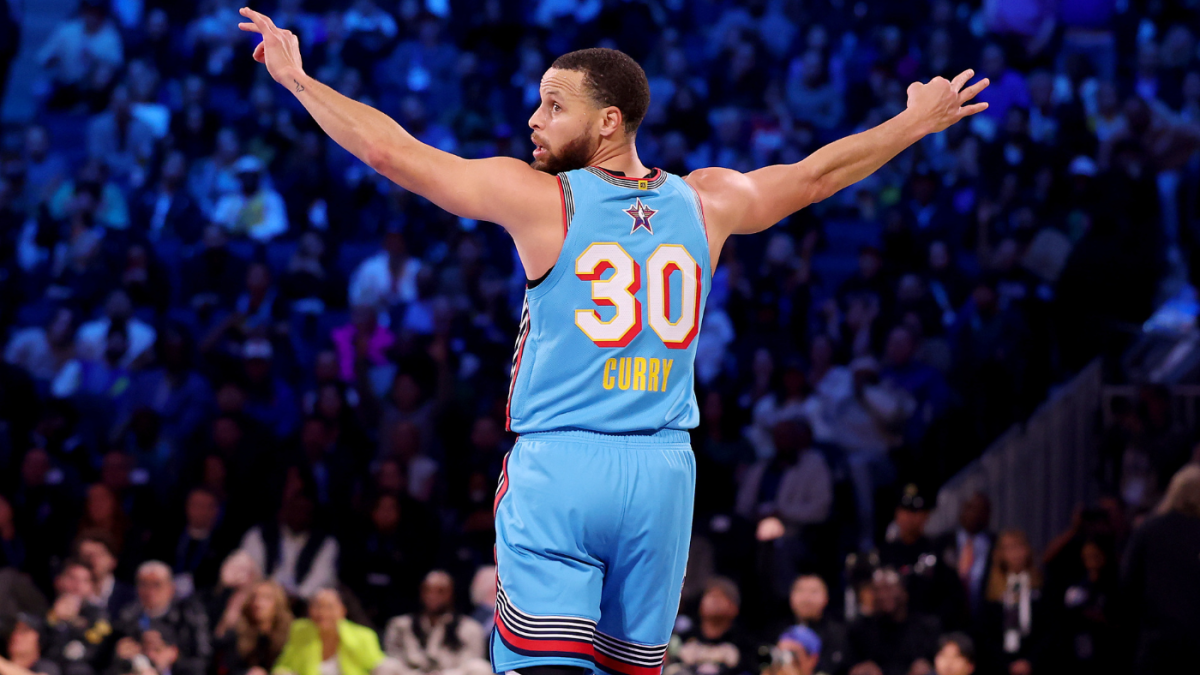The NBA unveiled its new All-Star Game format on Sunday night in San Francisco, and the old stars emerged victorious from the four-team tournament. Shaq’s OGs — a team made up of Stephen Curry, Kevin Durant, Jayson Tatum and other veteran stars — were crowned the winners of the 2025 NBA All-Star Game, taking down Chuck’s Global Stars in the championship game. Curry was named the MVP, becoming 15th player to win multiple All-Star Game MVPs (he also won in 2022).
The whole event took nearly three hours, but less than half of that time featured actual basketball. There were plenty of extracurricular off-court activities — and plenty of Kevin Hart, whom the NBA dubbed the “on-court emcee.” The three games were all played to 40 points, and Tatum dunked home the game-winning points in the championship game.
One star, however, was notably absent from the winning team. LeBron James did not play Sunday night, missing his first All-Star Game in 21 years. The Lakers star made the announcement he’d be sitting out about 75 minutes before the event started, and he said it was due to “foot and ankle discomfort.”
Below we’ll cover the results of tonight’s games as well as some of our biggest takeaways from the new format.
NBA All-Star Game schedule, results
- Game 1: Chuck’s Global Stars 41, Kenny’s Young Stars 32
- Game 2: Shaq’s OGs 42, Candace’s Rising Stars 35
- Championship Game: Shaq’s OGs 41, Chuck’s Global Stars 25
The presentation was a disaster
We’ll get to the basketball in a moment, but the truth is, we can’t even really evaluate it fairly because of how badly the entire night was managed from a production perspective. The final game was literally stopped after the first break to deliver a 15-minute tribute to a studio show that is not ending after the season, only changing channels.
That sums up the night in a nutshell. Every time the basketball started to get exciting, it seemingly went away. The broadcast as a whole was nearly three hours, but according to Reddit, only around 33 minutes of basketball was actually played. Kevin Hart seemingly got more air time than any of the players. Whether it was a musical performance or a Mr. Beast gimmick, the entire night seemingly revolved around things other than the actual All-Star Game. Even when the game was on, the commentary was unfocused. When Victor Wembenyama checked in for the first of what should be many, many All-Star appearances, several minutes of discussion were devoted to Shaq’s bizarre stance that Bol Bol is a comparable player.
The entire narrative surrounding last year’s All-Star Game was that the players did not take it seriously enough. This year, the narrative is going to be that nobody else did, either. No matter what the format for next year’s All-Star Game turns out to be, the focus needs to be on the actual basketball being played on the court. Everything else needs to be supplementary.
The format was promising
The effort that the players displayed on Sunday may not have matched the energy of the best All-Star Games from the 80s and 90s, but it was a definite improvement on last year’s debacle. In hindsight, that makes plenty of sense. The 2020 game was so great in part because the Elam Ending set a target score. Nobody remembers the first three quarters of that game, only the exciting ending. The endings to the first two games on Sunday were reasonably competitive because they were close. The players understood that they did not need to go all-out for 48 minutes, just a few at a time.
That concept does have promise. If only the endings are ever fun anyway, why not create as many endings as possible? The flaw that Sunday’s performance showed was that the target score of 40 meant that there wasn’t enough basketball to be played, so the broadcast was padded with poorly received pomp and circumstance. Perhaps a higher target score, or more games within the tournament structure, could fix that.
It’s too early to definitively call the tournament structure a success or failure. It was better than the last few All-Star Games, and that’s a start. It might only be a placeholder until enough foreign-born stars develop to hold a true Team USA vs. Team World battle. For now, though, it’s an experiment worth tinkering with.
The Rising Stars wrinkle needs to be refined
The concept of including Rising Stars in some fashion wasn’t especially popular, but it at least managed to drive some competitive basketball. After all, no team of proven All-Stars wants to lose to the rookies, so their presence at least served the purpose of waking the older players up. The trouble here was in execution.
With apologies to Dalton Knecht, most of the players on Team Candace were not, actual, rising stars. Amen Thompson will probably make an All-Star Team. Stephon Castle has a shot too. But for the most part, these were young players whose futures are still very much to be determined. They were involved because they won a mostly arbitrary tournament on Friday. That might have introduced some stakes into an event that fans usually skip, but it didn’t actually create the best possible Sunday of basketball.
So here’s a pitch: just as full, 12-man All-Star rosters are named, pick a full roster of Rising Stars. Make it an honor akin to being selected to an All-Rookie Team that can go on a player’s resume forever. That way, the NBA can promote the rising stars who participate on Sunday as the players who will likely be playing for the real All-Star teams in the near future. Don’t spread the best young talent out, consolidate it into one real team that can genuinely compete and bring the best out of the older All-Stars in this format.

